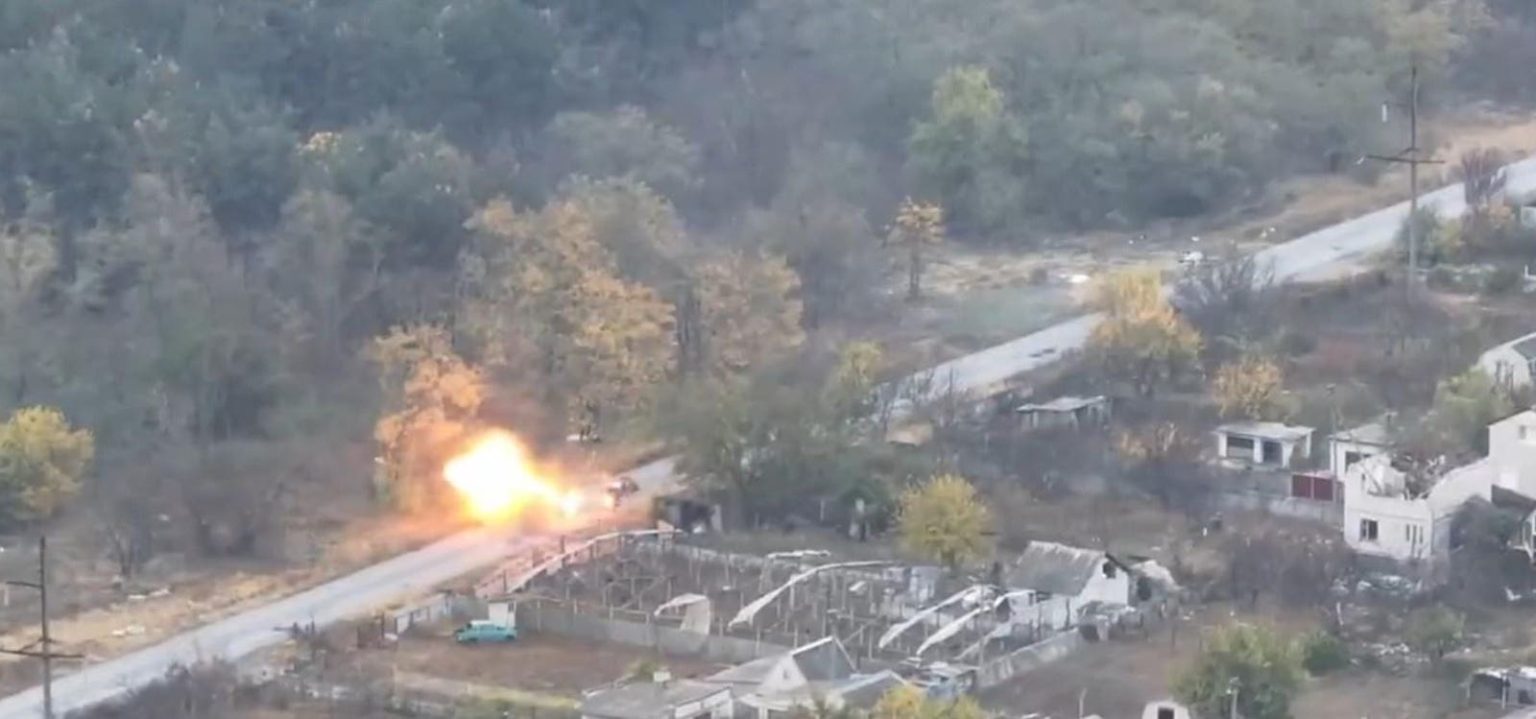On Oct. 19, Ukrainian marines in small boats motored across the Dnipro River in southern Ukraine’s Kherson Oblast, landed in the Russian-occupied settlement of Krynky and, in a series of infantry actions, seized a bridgehead across the river.
Provided Russian motor-rifle regiments don’t soon push the marines back into the river, the Krynky lodgment could serve as a base for a wider Ukrainian offensive in Kherson.
In the meantime, it’s an object-lesson in local air-superiority. A lesson a pair of motorbike-riding Russian air-defense troops learned the hard way, as an explosives-laden Ukrainian first-person-view drone chased them down and killed them in dramatic fashion in Krynky recently. Warning: the video of the strike is extremely graphic.
The Krynky river-crossing was the culmination of a long preparatory campaign by Ukrainian pilots, gunners, drone-operators and electronic-warfare specialists who struck Russian supply lines and air-defenses, suppressed Russian artillery, harried Russian strongpoints and—perhaps most critically—jammed Russian drones and struck Ukrainian electronic-warfare systems in order to keep the Russians from jamming Ukrainian drones.
And now the air over Krynky belongs to Ukrainian drone-operators and daring Ukrainian army helicopter pilots flying low-level rocket-attack sorties. Russian troops cannot venture out into the open in and around Krynky without drawing the attention of Ukrainian aircraft.
As early as June, there were reports the Ukrainians were positioning powerful radio-jammers on the Dnipro’s right bank in order to create a 12-mile-deep zone where Russia’s explosive FPV drones cannot reliably operate, but Ukrainian drones can operate.
“Ukraine fielded a number of powerful river-mobile drone-jammers while at the same time deploying slightly larger FPV drones with different radio operating frequencies that the jammers don’t cover,” noted Trent Telenko, a former quality auditor with the U.S. Defense Contract Management Agency who specializes in electronic warfare.
At the same time, Ukraine’s own drones and manned warplanes began hunting down Russian jammers in southern Ukraine, effectively preventing the Russians from preventing Ukrainian drones from flying over the Dnipro. Evidence abounds of Ukrainian precision strikes on Russian jammers—even mobile jammers fitted to trucks.
A pair of Russian soldiers packing a shoulder-fired infrared-guided missile should represent a serious threat to slower-flying Ukrainian drones. But in the battle for Krynky, Russian man-portable air-defense system teams apparently can’t deploy quickly enough, or in large enough numbers, to hunt down Ukrainian drones faster than Ukrainian drones hunt down them.
Consider the tragic fate of the two-man Russian MANPADS team that tried to change positions on a motorbike in Krynky, apparently sometime before Ukrainian marines expanded their control across the three-mile-wide riverside settlement.
An FPV drone operator from the Ukrainian special forces spotted the MANPADS team on its bike—and steered their drone to intercept.
Boom. The drone exploded, scattering debris, burning gasoline and bloody body parts. We can assume the victims were an air-defense team because they left behind what appeared to be a MANPADS battery.
The implication is obvious as Russia’s wider war on Ukraine grinds toward its third year. “FPVs are everywhere,” commented Samuel Bendett, a senior non-resident associate with the Center for Strategic and International Studies in Washington, D.C.
But whose FPVs are overhead depends on who has seized control of the electromagnetic spectrum that drones depend on for control and navigation. In Krynky, the Ukrainians are in control, for now. So their drones fly freely—and strike nearly instantly.
Read the full article here





